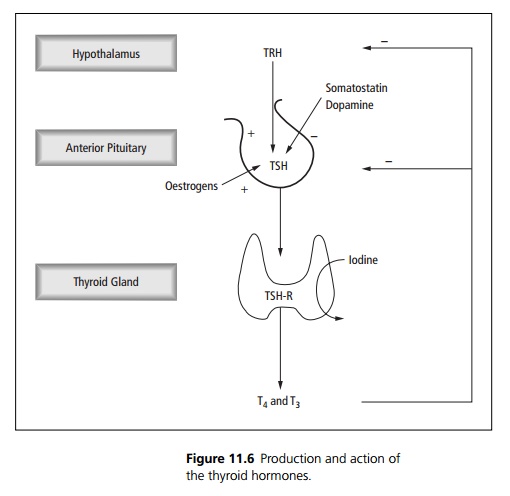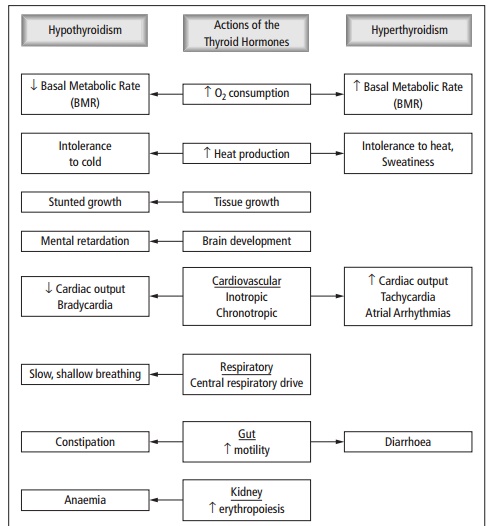Chapter: Medicine and surgery: Endocrine system
Thyroid axis
Thyroid axis
The thyroid axis
Thyrotrophin-releasing hormone (TRH) is released from the hypothalamus episodically and with a circadian rhythm. It stimulates the production of thyroid stimulating hormone (TSH) from the anterior pituitary gland. TSH is a glycoprotein, which binds to high-affinity receptors (TSH-R) in the thyroid gland. This in turn stimulates iodide uptake by the thyroid gland, and the synthesis and release of thyroxine (T4) and triiodothyronine (T3) through activation of adenylate cyclase (see Fig. 11.6).

Somatostatin and dopamine agonists decrease TSH secretion conversely dopamine antagonists increase TSH secretion. Other hormones affecting the thyroid axis include glucocorticoids, which in excess can impair the sensitivity of the pituitary to TRH and hence reduce TSH secretion. Oestrogens conversely increase the sensitivity of the pituitary to TRH.
Production and action of the thyroid hormones (T3 and T4)
The epithelial cells of the thyroid gland produce thyroglobulin, which can be seen in the centre of thyroid follicles and stains as pink ŌĆścolloidŌĆÖ. TSH stimulates the reabsorption of colloid by the cells and the production of T3 and T4. These hormones circulate in the blood bound to thyroxine binding globulin (TBG) and albumin. The majority of T3 is converted from the less active T4 by peripheral tissues. Disorders of the thyroid axis are shown in Table 11.6 and Fig. 11.7.



Related Topics